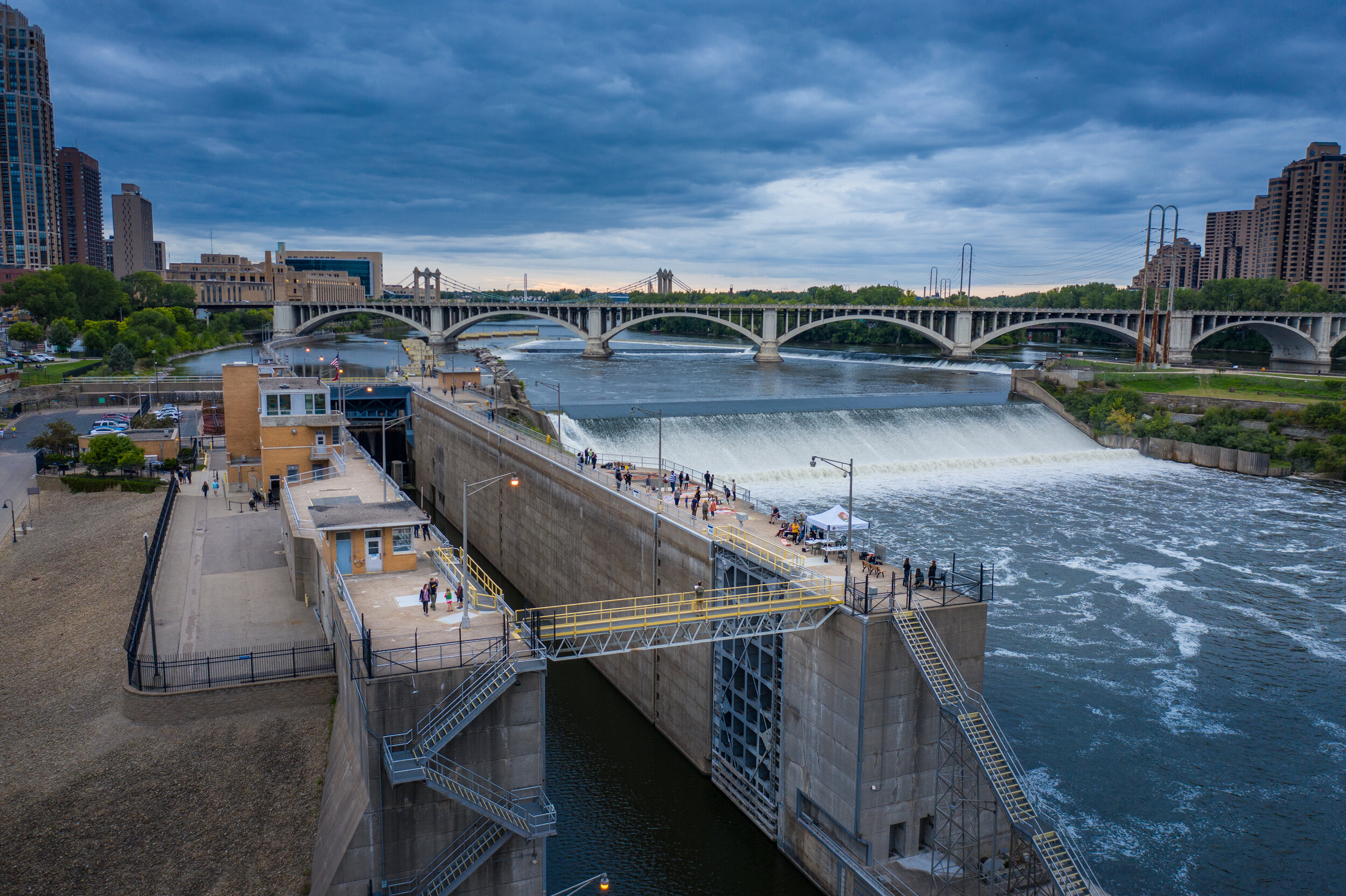The Geological History of St. Anthony Falls
By Maricio Madrigal, Saint Paul Right Track Intern, Mississippi Park Connection
St. Anthony Falls today is one of the biggest landmarks for the Mississippi River and for Minneapolis. Here we answer a few frequently asked questions about this impressive waterfall.
Where did St. Anthony Falls start?
During the last ice age era, around 12,000 years ago, a huge waterfall once stood where Saint Paul is today. Geologists say that this waterfall was 200 feet tall.
How did this waterfall turn into St. Anthony Falls?
The answer to that question is erosion! Erosion happens when sediment is being moved around by powerful currents. The waterfall was made up of limestone and sandstone. While limestone is a solid rock that takes longer to erode. Sandstone, however, is softer and takes less time to erode meaning that over time the waterfall was losing chunks of rock beneath itself. Because of erosion, the sandstone was not capable of supporting the limestone for very long. As erosion was happening, slowly this waterfall was moving up the river. It passed the Minnesota River. About 2,000 years later it would arrive where Minnehaha Creek is today and break off into waterfalls. On the Mississippi River, St. Anthony Falls continued to erode and the other became Minnehaha Falls.
Minnehaha Falls is a perfect example to see the history of this once great waterfall while also understanding erosion better. Underneath Minnehaha Falls you can see the top layer of limestone of the waterfall and the sandstone is the bottom layer where the water hits.
Why doesn’t St. Anthony Falls look like a natural waterfall?
Minnehaha Falls is astonishing to see, but St. Anthony Falls is where the story ends for this once great waterfall. St. Anthony Falls is now covered by a concrete blanket to ensure that no further erosion can happen. St. Anthony Falls had to go through many stages of maintenance during the mid to late 1800s and this was primarily due to the Eastman Tunnels. These tunnels were constructed to create a tailrace between the islands of Hennepin and Nicollet. However, the workers noticed that water began leaking through the tunnel and soon it collapsed. The collapse of the tunnel created a whirlpool that started sucking in anything near it.
After many attempts at preventing the degradation of the falls, the Army Corps of Engineers had been called upon to find a solution to prevent the falls from further collapsing. They went with a plan to create a dam near the waterfall so they could maintain the water levels from further eroding the limestone while also making a timber sheet for the falls as well. Even the Army Corps of Engineers went through much trial and error. It wasn’t until 1880 that they completed all constructions that prevented the falls from further collapse. The Corps maintained it until 1885, when they handed over maintenance to Minneapolis and the power companies. If it wasn’t for both the relentless amount of prevention and construction, then St. Anthony Falls wouldn’t still be here today.
What else should I know about the falls?
Owamni-yomni is ‘whirlpool’ in the Dakota language. Gakaabika is ‘severed rock’ in the Ojibwe language. Both are the names of the place where the Upper St. Anthony Falls Lock and Dam currently sits, in the homelands of the Dakota. Haha Wakpa is the name for the Mississippi River in the Dakota lanuage.
Prior to colonial settlement, the Dakota lived along Owamni-yomni / Gakaabika and Ojibwe, Ho-Chunk, and other nations traveled through that place. It was and still is an important and sacred place to Ojibwe, Ho-Chunk, Dakota and Indigenous peoples currently living here. The name St. Anthony came from Father Hennepin who was the first European to name the falls after his favorite patron saint, Athony of Padua.
How can I visit St. Anthony Falls?
Follow the Mississippi River and you’ll find that the waterfall can still be seen and enjoyed in downtown Minneapolis. You can even tour the lock and dam during the summer to learn more history of the falls and surrounding area from a National Park Service ranger. If you want the best views of St. Anthony Falls, walk across the historical Stone Arch Bridge and visit WaterPower Park.





